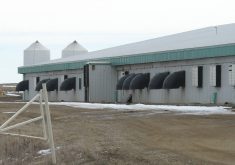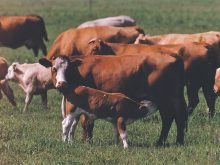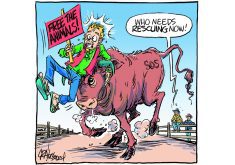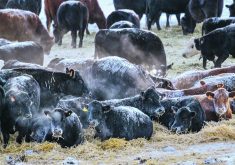For a pregnant cow, just lying down and getting up can be a dangerous manoeuvre. As it drops its front end to lie down or boosts its hind end to rise, its uterus is temporarily suspended in a precarious position. A sudden fall or slip at that moment can cause the uterus to twist on its long axis.
Called a uterine torsion, this may also be caused by rumen pressure on the pregnant uterus or calf activity in the uterus. No matter the cause, a uterine torsion has two serious consequences:
Read Also
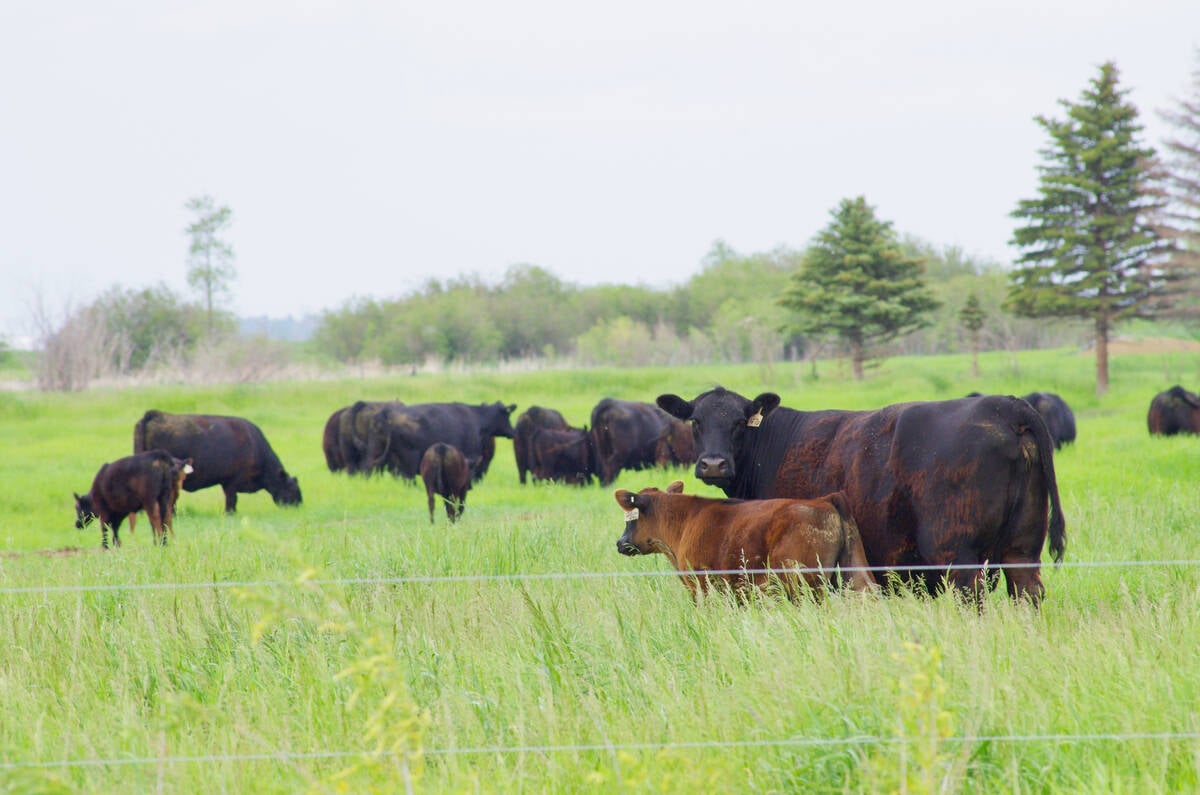
Tick research from the University of Manitoba focuses on insects and testing
Manitoba researchers are looking into the effects of tick and fly disease in cattle.
- Blood supply to the uterus and the calf may be cut off.
- The birth canal is wound up like a twisted towel, closing the passage through which the calf should exit.
Uterine torsion occurs most commonly in cows in the last stage of pregnancy but it can occur as early as 70 days gestation and as late as the day of calving. It strikes mature cows that have had several calves far more than heifers that are pregnant with their first calves.
One study revealed that torsions were present in about seven percent of cows presented for dystocia. The incidence in pastured cattle was 2.7 percent while in stabled cows it was 8.6 percent. From this research, it is evident that overall poor muscle tone is a big factor.
A torsion is graded by the degree of uterine rotation. Rotations of 45 to 90 degrees are frequently discovered on rectal examinations but many seem to resolve before calving. Torsions of 180 degrees can be present for weeks without incidence. They remain silent until calving.
Torsions over 180 degrees tend to obstruct blood supply to the uterus, causing fetal death. In advanced cases, the fetus can turn gangrenous and kill the cow. Full turn torsions of more than 360 degrees do occur and torsions of almost two full turns have also been reported, though rarely.
Abdominal pain is the first identifiable symptom. The cow may show signs such as lack of appetite, constipation, depressed rumen contractions, rapid pulse, restlessness, treading and tail switching. Producers may be led to believe that a cow exhibiting these signs is in the first stage of labour and they don’t check the cow until it fails to progress to the obvious straining signs of stage two labour.
Not treated, a torsion can trigger smelly diarrhea, rapid breathing, cold extremities, collapse and death.
A rectal examination should be performed if symptoms of abdominal discomfort are noticed in a cow over six months gestation. A torsion is detected by palpating the vagina and cervix. These structures feel like they are rotating as a hand holding them is passed deeper into the abdomen. The birth canal may also seem narrowed before it opens to the uterine body. As well, the broad ligament, which is the band that holds the uterus in place, is tightly wound on the uterine body.
The prognosis for a cow with a torsion depends on the extent of the rotation and the length of time it has existed. The prognosis is good in mild cases of less than 180 degrees where there are no symptoms. If the torsion is more than 180 degrees but discovered and treated early, the cow and fetus can live. In advanced cases, the fetus is usually dead and the prognosis for the cow is poor.
The oldest way to treat torsions is to roll the cow. This is preferably done outside on a grassy slope with the cow’s head positioned lower than its rear.
At least three people are needed to rope the cow onto its side and sometimes the cow needs sedation to allow handling.
As the cow is rolled in the correct direction, its heavy uterus is slower to move than its body, so the torsion is relieved. This procedure may need to be repeated several times.
Another method involves placing a plank over the cow’s abdomen to hold the uterus in place while it is rolled.
Some veterinarians advocate having an arm in the vagina to hold the uterus in place, but most consider this unnecessary.
Surgery is another option. An incision is made in the cow’s flank and the torsion is relieved by rotating the uterus in the abdomen. The advantage of this method is that a caesarean can be done at the same time if the calf is full term.





